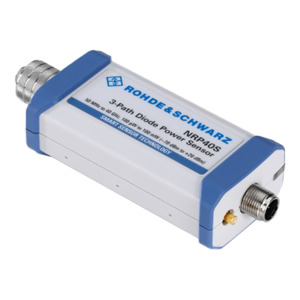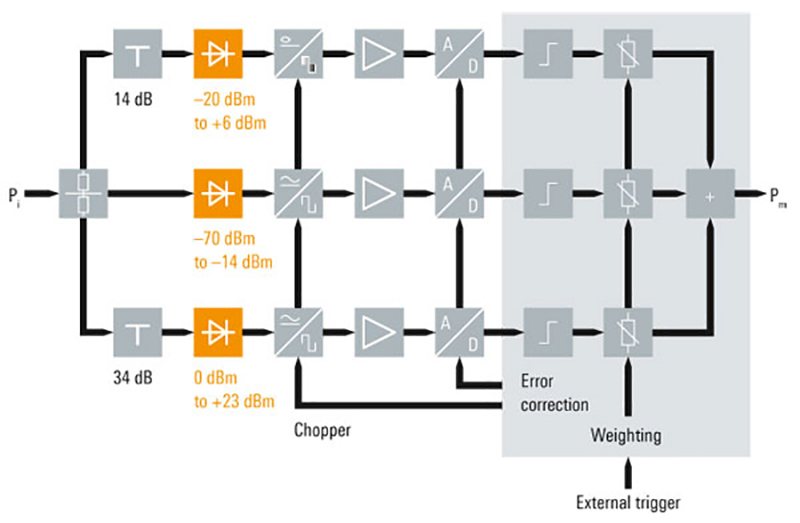
- Description
- Specifications
- Documents
NRP40S Three-Path Diode Power Sensor
Ideal for universal applications - 93 dB dynamic range thanks to innovative three-path concept.
The R&S®NRPxxS/SN power sensors use three separate diode paths, each operated in the optimum detector range. As a result, the average power can be determined with high accuracy independent of the modulation type. Measurement results are hardly affected by interfering signals or harmonics. The R&S®NRPxxS/SN power sensors therefore behave in a way similar to thermal power sensors but offer significantly higher speed. They provide up to 93 dB dynamic range with an excellent lower measurement limit of –70 dBm.
Functions and Performance Features:
- Fully characterized power sensors
- Minimizing measurement uncertainty
- Intelligent averaging function minimizes measurement time
- Versatile measurement functions
- USBTMC for easy system integration
- Built-in trigger I/O port
- Sensor status at a glance with status LED
- Detachable cables for flexible operation

In contrast to conventional multipath technology, adjacent diode paths in the R&S®NRPxxS/SN power sensors overlap by 6 dB. All paths are continuously and simultaneously measured. The final measurement result is achieved by appropriately weighting the measurement results of all paths. This innovative approach ensures a smooth transition between measurement paths. Problems due to hard switching between the measurement paths, such as hysteresis effects, additional measurement delays and differential nonlinearity, are eliminated. The patented sensor architecture also improves the signal-to-noise ratio and increases measurement speed in the transition region.
- Unprecedented measurement speed and accuracy even at low levels
- More than 50,000 readings/s
- 10,000 triggered measurements/s
The power sensors come with various, detachable cables for connection to diverse display units. A screw connection is provided on the sensor end to prevent accidental loosening of the cable.
The R&S®NRP-ZKU USB interface cable can be used to connect a power sensor to a laptop/PC via the USB interface. This is an extremely space-saving and also cost efficient solution that does not require a base unit. Two software tools – R&S®Power Viewer Plus and R&S®NRPV virtual power meter – are available to simplify sensor operation from a laptop/PC. These tools support all measurement functions implemented in the sensors.
